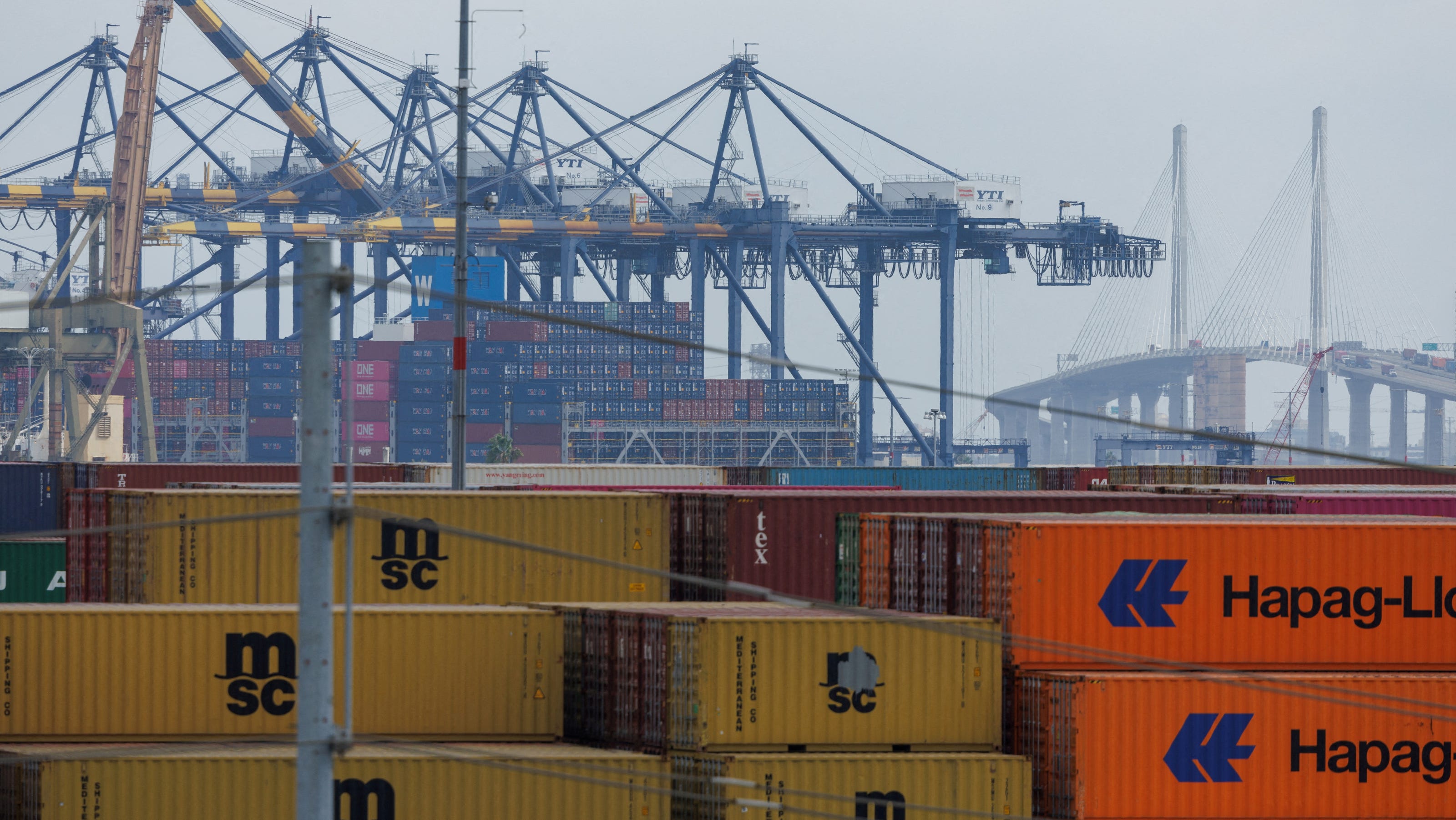Second-Order Effects Of Reciprocal Tariffs On Indian Industries: A Detailed Study

Table of Contents
Direct Impacts of Reciprocal Tariffs on Specific Indian Industries
Reciprocal tariffs, essentially tit-for-tat tariffs levied by two or more countries, directly impact industries involved in import and export. Let's examine this impact on some key sectors in India:
The Automotive Sector
The automotive sector, a significant contributor to India's GDP, is highly susceptible to reciprocal tariffs. Increased tariffs on imported components translate to:
- Increased input costs: Higher prices for imported parts like engines, electronics, and steel significantly increase the manufacturing cost of vehicles.
- Reduced competitiveness: Higher prices make Indian-made vehicles less competitive in both domestic and international markets, impacting sales.
- Potential job losses: Reduced production due to lower demand can lead to layoffs in manufacturing plants and related industries.
- Impact on exports: Higher prices make Indian automotive exports less attractive in global markets, hindering growth.
A recent study by the Society of Indian Automobile Manufacturers (SIAM) indicated a correlation between tariff increases and a slowdown in production in the auto parts manufacturing segment.
The Textile Industry
India's textile industry, a large employer, faces similar challenges. Reciprocal tariffs can severely impact:
- Price increases: Higher tariffs on imported raw materials like cotton increase the cost of production for garments and textiles.
- Reduced demand: Higher prices for finished goods reduce consumer demand, both domestically and internationally.
- Impact on export competitiveness: Increased production costs make Indian textiles less competitive in global markets, potentially leading to loss of market share.
- Potential for retaliatory tariffs: Imposing tariffs can invite retaliatory tariffs from other countries, further disrupting trade.
Government subsidies and support schemes can partially mitigate these negative impacts, but their effectiveness is often limited.
The Pharmaceutical Industry
The pharmaceutical industry, crucial for public health, is also vulnerable. Reciprocal tariffs can:
- Increase prices of raw materials: Higher import duties on active pharmaceutical ingredients (APIs) and other raw materials increase the cost of manufacturing medicines.
- Reduced access to generic drugs: Higher prices of generic drugs reduce access to affordable healthcare, particularly for low-income populations.
- Implications for public health: Increased medicine prices can lead to decreased medication adherence and worsen public health outcomes.
- Increased reliance on imports: Higher production costs could lead to increased dependence on imported medicines, impacting national drug security. This also has implications for intellectual property rights, as reliance on imports increases vulnerability to international pricing pressures.
The Agricultural Sector
The agricultural sector, employing millions, is affected by export restrictions stemming from reciprocal tariffs. This can lead to:
- Reduced export opportunities: Tariffs imposed by other countries on Indian agricultural products can significantly reduce export volumes and revenue for farmers.
- Increased domestic prices: Reduced exports can lead to a surplus of certain crops in the domestic market, potentially leading to lower prices for farmers.
- Impact on farmer incomes: Reduced export opportunities and potentially lower domestic prices can severely impact farmer incomes, leading to economic hardship.
- Government procurement and support: Government procurement programs and support schemes can mitigate some of the negative effects, but these are often insufficient to fully compensate for export losses.
Indirect (Second-Order) Effects on the Indian Economy
The direct impacts of reciprocal tariffs extend far beyond specific industries, creating a ripple effect throughout the Indian economy:
Inflationary Pressures
Increased prices of imported goods and raw materials due to tariffs directly contribute to inflation:
- Impact on consumer spending: Higher prices reduce consumer purchasing power, dampening consumer spending and overall economic growth.
- Decreased purchasing power: Inflation erodes the value of wages and savings, reducing the overall standard of living.
- Potential for wage-price spirals: If workers demand higher wages to compensate for inflation, businesses may respond by raising prices further, creating a vicious cycle.
- Economic indicators like the Consumer Price Index (CPI) and Wholesale Price Index (WPI) can be used to monitor and assess inflationary pressures arising from reciprocal tariffs.
Impact on Employment and Unemployment
Reciprocal tariffs lead to job losses in export-oriented industries while potentially creating jobs in import-substituting industries. However, this shift is not always smooth or beneficial:
- Potential job losses in export-oriented industries: Industries heavily reliant on exports will experience production cuts and consequent job losses.
- Potential job creation in import-substituting industries: Increased domestic demand due to import restrictions might lead to job creation in certain industries, but often these are insufficient to compensate for losses in export sectors.
- The overall impact on employment depends on the magnitude and nature of the reciprocal tariffs and the resilience of the Indian economy.
Foreign Direct Investment (FDI) Flows
Reciprocal tariffs can negatively affect FDI flows into India:
- Reduced investor confidence: Uncertainty and instability caused by trade disputes can deter foreign investors.
- Potential shift in investment destinations: Investors may choose other countries with more stable and predictable trade policies.
- Implications for economic growth: Reduced FDI can hamper economic growth and development.
- Sectors that are significantly affected by reciprocal tariffs will experience a decline in investment.
The Ripple Effect on Related Industries
The initial impact on specific sectors creates a ripple effect throughout the economy:
- Supply chain disruptions: Tariffs affecting one industry can disrupt the supply chains of other related industries.
- Reduced demand for ancillary services: A decline in production in one industry will impact demand for services like transportation, logistics, and finance.
- Impact on overall economic growth: The cumulative effect of these disruptions can lead to a slowdown in overall economic growth.
Conclusion: Understanding and Mitigating the Second-Order Effects of Reciprocal Tariffs on Indian Industries
This analysis demonstrates that the second-order effects of reciprocal tariffs on Indian industries are far-reaching and significant. The automotive, textile, pharmaceutical, and agricultural sectors are particularly vulnerable. The broader consequences, including inflationary pressures, job losses, and reduced FDI flows, pose a serious threat to India's economic health. Policymakers must prioritize strategies to mitigate these negative impacts. This might involve exploring alternative trade agreements, diversifying export markets, strengthening domestic industries through targeted support, and promoting greater resilience within supply chains.
Further research is crucial to fully understand the complex interplay of factors involved and develop effective long-term solutions. We encourage readers to explore industry-specific reports from organizations like SIAM or government publications for more detailed data on the second-order effects of reciprocal tariffs on Indian industries and inform more effective policymaking to minimize the negative economic consequences.

Featured Posts
-
 Protest Tegen Npo Leiding Frederieke Leeflang In Het Vizier
May 15, 2025
Protest Tegen Npo Leiding Frederieke Leeflang In Het Vizier
May 15, 2025 -
 Dimereis Sxeseis Kompos Kai Sigiarto Syzitoyn Kypriako Kai Ee
May 15, 2025
Dimereis Sxeseis Kompos Kai Sigiarto Syzitoyn Kypriako Kai Ee
May 15, 2025 -
 The Rise Of Disaster Betting Examining The Market For Wildfire Predictions
May 15, 2025
The Rise Of Disaster Betting Examining The Market For Wildfire Predictions
May 15, 2025 -
 Free Live Stream Toronto Maple Leafs Vs Ottawa Senators Game 4 Nhl Playoffs
May 15, 2025
Free Live Stream Toronto Maple Leafs Vs Ottawa Senators Game 4 Nhl Playoffs
May 15, 2025 -
 Colorado Avalanche Vs Toronto Maple Leafs Expert Predictions For March 19
May 15, 2025
Colorado Avalanche Vs Toronto Maple Leafs Expert Predictions For March 19
May 15, 2025
